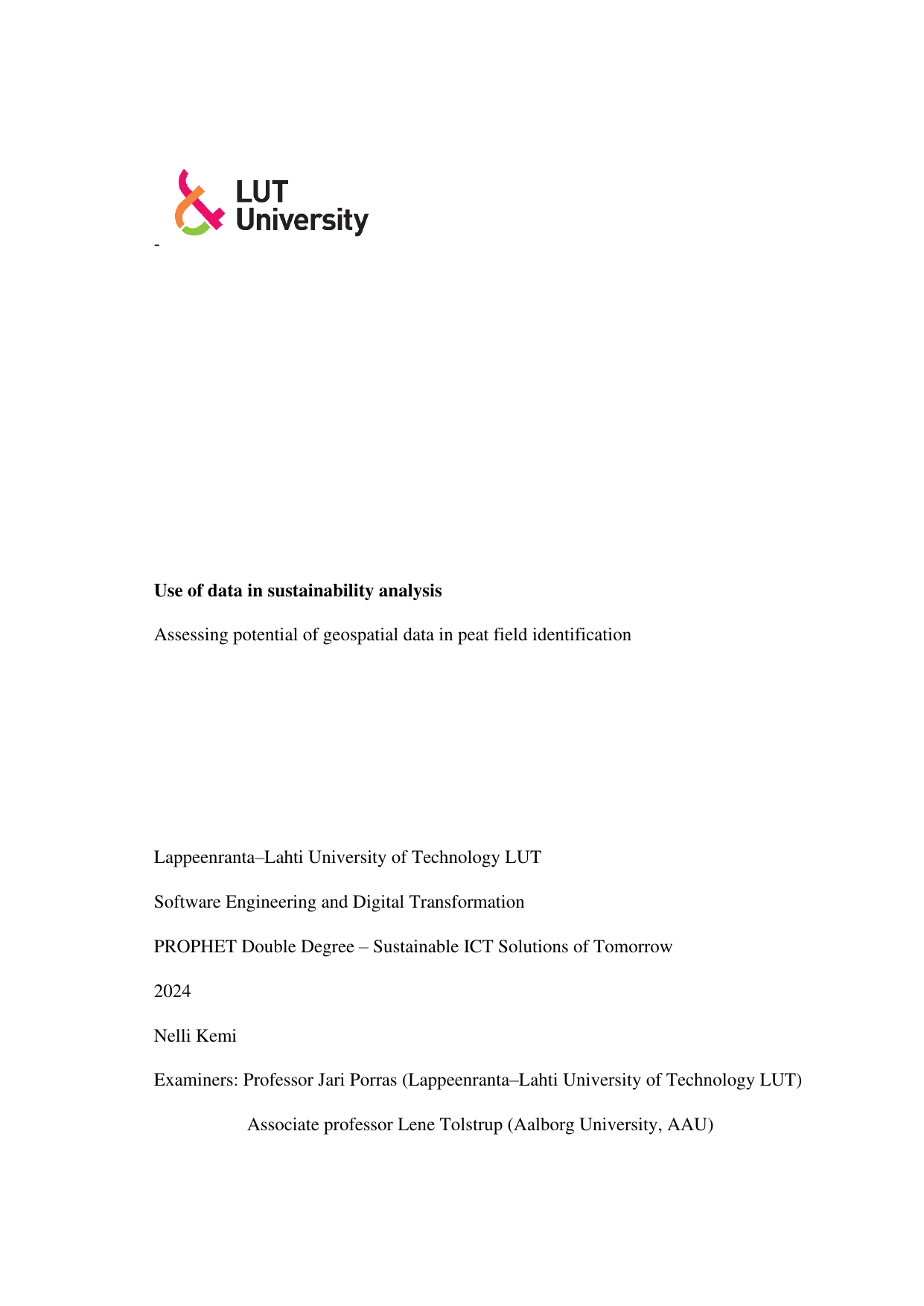
Use of data in sustainability analysis: Assessing potential of geospatial data in peat field identification
Author
Term
4. term
Publication year
2024
Submitted on
2024-08-12
Pages
66
Abstract
n Finland, drained peatlands are important for the agricultural sector, but they are also important sources of greenhouse gases. Therefore, they are targeted by nature restoration regulations. To better direct these regulations and incentives, a deeper understanding of peat fields is needed, especially a way to determine peat fields belonging to real estate. One potential solution could be the integration of geospatial data. Combining geospatial data from multiple sources could provide a way to determine the locations of peat fields and provide insight into their state. Similar combinations have yet to be widely researched. This thesis aimed to investigate the topic by collecting open geospatial data from different Finnish institutes and spatially combining the datasets to collect needed information. Then, a solution was developed for displaying the results in a way to best allow for further sustainability analysis to be conducted. The resulting solution’s sustainability impacts were evaluated using the Sustainability Awareness Framework (SusAF). A definition for peat field parcels was established as well as an overview of their distribution and the crops cultivated on them. The proposed application was estimated to have a variety of potential impacts on the different dimensions of sustainability in the short term and the long term. The most important effects included the possible evaluation of real estates with peat fields and the possibility to direct decision-making. Further research could be conducted on the accuracy and applicability of the proposed peat field definition as well as their economic importance.
Keywords
Documents
